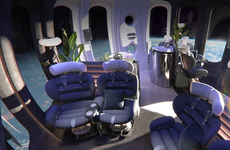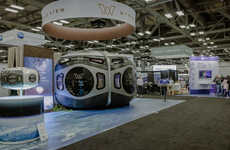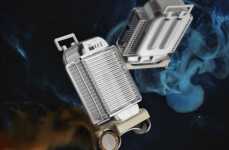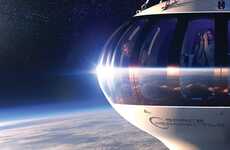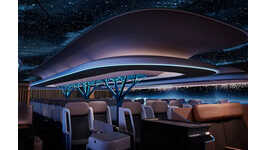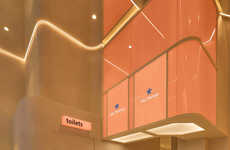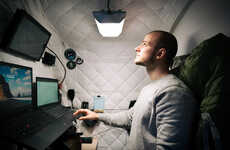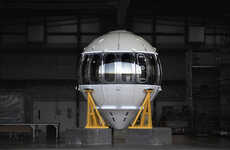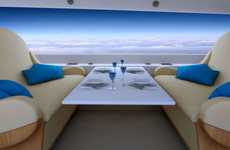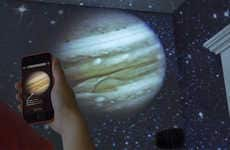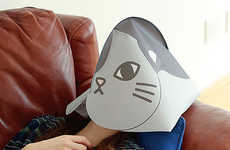
The Boeing CST-100 Interior Concept is Designed for Space Tourists
Rahul Kalvapalle — May 2, 2014 — Tech
References: boeing.mediaroom & gizmag
Boeing unveiled a mock-up of the interior of the CST-100, a commercial spacecraft that could eventually ferry American crew and cargo to the International Space Station. The CST-100 is being developed by Boeing and NASA, but this interior design mock-up reflects Boeing's ambitions beyond working with NASA.
Unlike typical manned spacecraft, the CST-100's interior is highly minimalist. It lacks the complicated stacks of switches, knobs ans readouts and looks more like a product of science fiction than a real design. The reason for this is that Boeing is looking beyond NASA astronauts and preparing for paid space flights; therefore this interior design is aimed more toward paying passengers than NASA astronauts.
The lighting scheme of the CST-100 is also peculiar, adopting an blue indirect lighting configuration. Boeing says this kind of lighting will remind passengers of the daytime blue sky and maintain their connection with Earth.
Unlike typical manned spacecraft, the CST-100's interior is highly minimalist. It lacks the complicated stacks of switches, knobs ans readouts and looks more like a product of science fiction than a real design. The reason for this is that Boeing is looking beyond NASA astronauts and preparing for paid space flights; therefore this interior design is aimed more toward paying passengers than NASA astronauts.
The lighting scheme of the CST-100 is also peculiar, adopting an blue indirect lighting configuration. Boeing says this kind of lighting will remind passengers of the daytime blue sky and maintain their connection with Earth.
Trend Themes
1. Minimalist Spacecraft Interiors - Disruptive Innovation Opportunity: Companies can focus on developing minimalist interior designs for spacecrafts to cater to the growing market of paid space tourism.
2. Paid Space Flights - Disruptive Innovation Opportunity: Businesses can explore opportunities in the emerging industry of paid space flights by providing services and experiences tailored to the needs and preferences of space tourists.
3. Indirect Lighting Configuration - Disruptive Innovation Opportunity: Lighting companies can develop innovative lighting solutions for spacecraft interiors, utilizing indirect lighting configurations to enhance the passenger experience during space travel.
Industry Implications
1. Space Tourism - Disruptive Innovation Opportunity: The space tourism industry can capitalize on the demand for unique and futuristic experiences by offering minimalist and visually appealing spacecraft interiors.
2. Aerospace Manufacturing - Disruptive Innovation Opportunity: Aerospace manufacturers can explore new design possibilities and materials to create spacecraft interiors that prioritize simplicity, comfort, and aesthetics for commercial space travel.
3. Interior Design - Disruptive Innovation Opportunity: Interior design companies can enter the space industry by offering their expertise in creating visually appealing and functional spacecraft interiors for both NASA astronauts and paid space tourists.
1.7
Score
Popularity
Activity
Freshness

